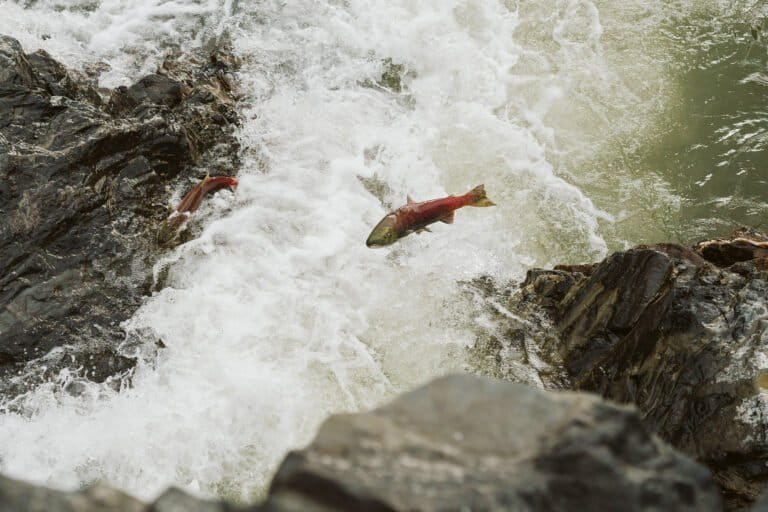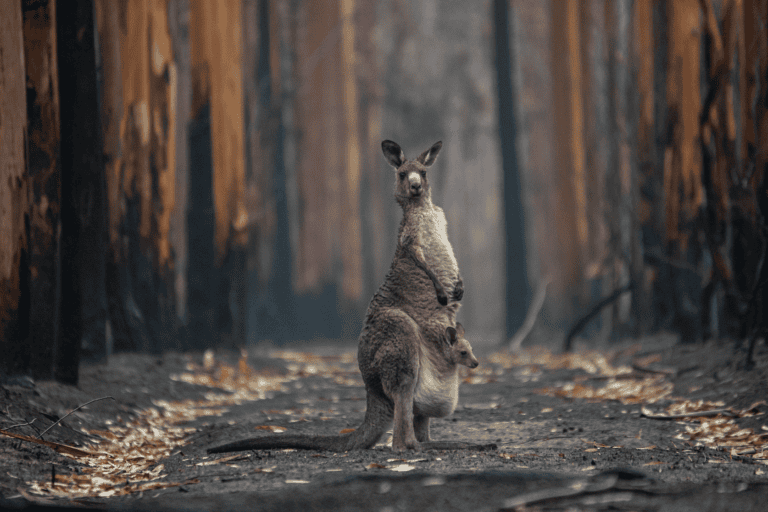POLEWALI MANDAR, Indonesia — Over the past three decades, the residents of Mampie village have watched their homes and farmland vanish from the west coast of Indonesia’s Sulawesi Island. A…
One after another, salmon leapt out of the water and hurtled themselves at the falls, propelled by instinct to move upriver. They, like all Pacific salmon, were born in freshwater,…
Intact forests play a vital role in tackling the climate crisis by absorbing and storing carbon. Still, there’s uncertainty around their true carbon-capturing potential, and previous efforts to quantify it…
Protests are arising in South American communities as Google, Microsoft and other tech giants build water-hungry computer data centers in increasingly drought-besieged nations, including Uruguay and Chile.
Meet the rural farmers in southeastern Spain fighting the encroaching Sahara Desert through regenerative agriculture and landscape restoration.
Scientists were shocked by the high degree of warming in the North Atlantic Ocean this summer, and are concerned about effects on phytoplankton and fish. Intensifying and lengthening marine heatwaves around the globe are also worrying.
On a fateful day in 2019 that is etched into the memories of local residents, the tranquility along Kenya’s Lake Victoria shores was shattered by an overwhelming surge of water.…
New research shows that marine heat waves last longer in deeper water, increasing the possibility of species displacement or mortality. Marine heat waves, defined as events where ocean temperatures rise…
As the fire season reaches its peak in the Amazon region, coffee producers located thousands of kilometers away are also living their own private hell. Farms like Felipe Barretto Croce's…
Regional governments in wildfire-hit Indonesia shuttered schools in the first week October, as sickly air pollution continued to cloak several population centers in Kalimantan and Sumatra. Local authorities in Central…
New acute respiratory infections in Indonesia’s Palembang city, on the island of Sumatra, are on track to surpass the total number recorded there in 2022, as firefighters scramble to confront…
Salinity intrusion triggered by different factors, including sea-level rise, commercial shrimp cultivation, and decreased upstream transboundary water flow, have directly affected agriculture in Bangladesh’s southern coastal districts in Bangladesh, some…
JAKARTA — Every morning, sisters Janah and Jaroh rise early on the diminishing coastline of Indonesia’s capital city and pray for calm weather and good fortune. At around 9 a.m.,…
Scientists have long known that global warming is upending not just seasonal climate trends, but also minute weather patterns on a daily basis. However, establishing a strong link hasn’t always…
The planet’s Indigenous peoples are valued as Earth’s best stewards, protecting forests and other ecosystems holding vast carbon stores. But governments offer insufficient aid to meet the extreme climate threats now buffeting traditional communities.
The world needs to ramp up action to address climate change, according to a major report from the United Nations released Sept. 8. Meeting agreed-upon climate goals requires “phasing out…
Brazil has managed to bring down spiraling rates of deforestation in the Amazon Rainforest in the first half of this year, but the neighboring Cerrado savanna has seen a wave of environmental destruction during the same period.
Released in February 2022, the latest report prepared by the Intergovernmental Panel on Climate Change (IPCC) stressed that greenhouse gas emissions are increasing the frequency and intensity of extreme temperatures…
AGNARAFALY and MENABE, Madagascar — For Soja and his family, who escaped starvation bred by drought, the December rain hammering their corrugated metal roof should be welcome. But rains are…
LOS BAÑOS, Philippines — Built on wooden stilts and tied to endemic bangkal trees (Nauclea orientalis) are the homes of the Manobo Indigenous tribe, seemingly floating on the waters of…
TRA VINH, Vietnam — In the heat of Tra Vinh's dry season, rice farmer Thach Ren stands on a recently harvested field holding a smartphone. The once lush and green…
Top tropical ecologists have spent two decades studying the impact of climate change on a single transect in the Peruvian Andes, an area unparalleled in its biodiversity. They find that every species studied there is struggling against warming temperatures.
Research has found that drought and declining water availability are increasingly impeding the ability of tropical ecosystems to soak up carbon dioxide, making the tropics a less effective carbon sink.…
When battling to protect Indonesia's peatlands during wildfire crises in 2015 and 2019, most volunteer firefighters confronted the infernos with a dire shortage of equipment and technological resources. For community…
The south polar region long seemed resistant to climate change, but as warming intensifies, impacts are being identified across the region. While signs of an irreversible tipping point are lacking, Antarctic changes will likely affect the rest of the world.
Researchers analyzed never-before-used satellite data to calculate how much carbon is stored in protected areas worldwide.
It's been seven years since the last significant El Niño — one of the strongest on record. It triggered disease outbreaks, caused changes in weather conditions that affected fisheries and…
COLOMBO — The month of April is typically the warmest in Sri Lanka as the sun is positioned directly over the Indian Ocean island. Coupled with high humidity, the high…
Dan Ilic’s comedic podcast, “A Rational Fear,” has been hosting journalists, comedians, and politicians that dissect issues and policy related to climate change and the environment for a decade. Over…
Smoke from the catastrophic 2019-20 Australian bushfires may have tipped the planet into a La Niña climate phenomenon lasting almost three years, according to new research published May 10 in…


































































